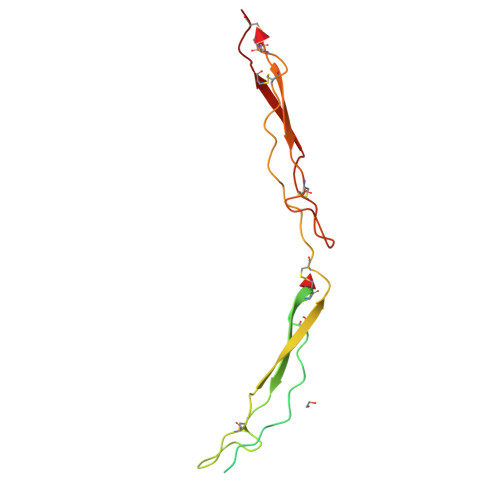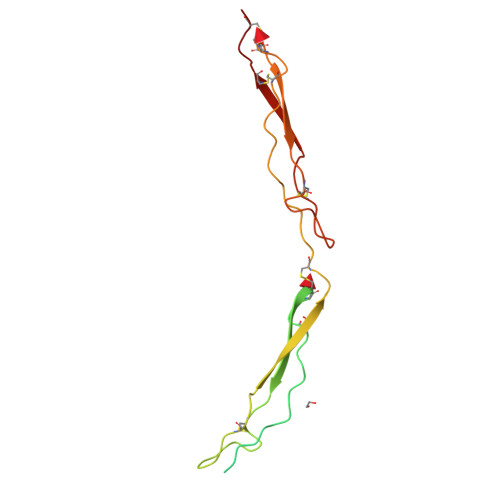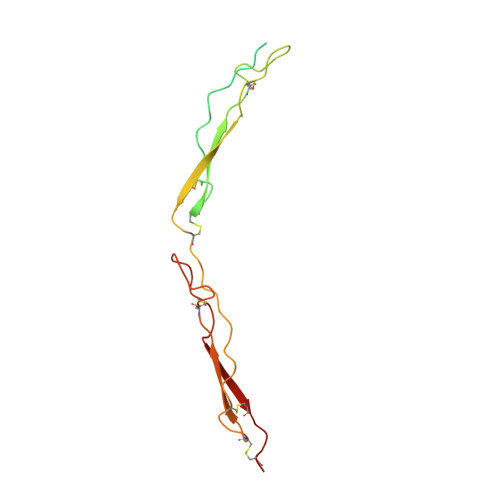O-fucosylation stabilizes the TSR3 motif in thrombospondin-1 by interacting with nearby amino acids and protecting a disulfide bond.
Berardinelli, S.J., Eletsky, A., Valero-Gonzalez, J., Ito, A., Manjunath, R., Hurtado-Guerrero, R., Prestegard, J.H., Woods, R.J., Haltiwanger, R.S.(2022) J Biological Chem 298: 102047-102047
- PubMed: 35597280
- DOI: https://doi.org/10.1016/j.jbc.2022.102047
- Primary Citation of Related Structures:
7YYK - PubMed Abstract:
Thrombospondin type-1 repeats (TSRs) are small protein motifs containing six conserved cysteines forming three disulfide bonds that can be modified with an O-linked fucose. Protein O-fucosyltransferase 2 (POFUT2) catalyzes the addition of O-fucose to TSRs containing the appropriate consensus sequence, and the O-fucose modification can be elongated to a Glucose-Fucose disaccharide with the addition of glucose by β3-glucosyltransferase (B3GLCT). Elimination of Pofut2 in mice results in embryonic lethality in mice, highlighting the biological significance of O-fucose modification on TSRs. Knockout of POFUT2 in HEK293T cells has been shown to cause complete or partial loss of secretion of many proteins containing O-fucosylated TSRs. In addition, POFUT2 is localized to the endoplasmic reticulum (ER) and only modifies folded TSRs, stabilizing their structures. These observations suggest that POFUT2 is involved in an ER quality control mechanism for TSR folding and that B3GLCT also participates in quality control by providing additional stabilization to TSRs. However, the mechanisms by which addition of these sugars result in stabilization are poorly understood. Here, we conducted molecular dynamics (MD) simulations and provide crystallographic and NMR evidence that the Glucose-Fucose disaccharide interacts with specific amino acids in the TSR3 domain in thrombospondin-1 that are within proximity to the O-fucosylation modification site resulting in protection of a nearby disulfide bond. We also show that mutation of these amino acids reduces the stabilizing effect of the sugars in vitro. These data provide mechanistic details regarding the importance of O-fucosylation and how it participates in quality control mechanisms inside the ER.
Organizational Affiliation:
Department of Biochemistry and Molecular Biology, Complex Carbohydrate Resource Center, University of Georgia, Athens, Georgia, USA.


















